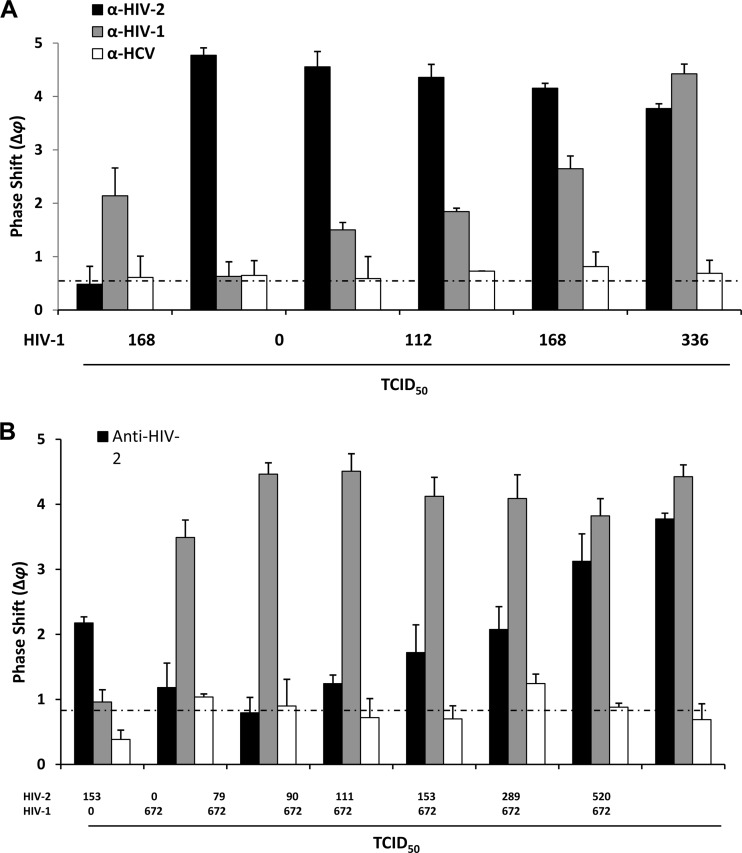Fig 2.
Detection of increasing amounts of HIV-1 in the presence of a constant amount of HIV-2 (A and B) or vice versa (C and D). (A and C) Viral loads are indicated in the TCID50s below the x axis; the y axis indicates phase shifts (Δφ). Each bar represents quadruplicate measurements (mean ± standard error) taken at 5 min after the addition of virus. Gray bars represent lanes coated with anti-HIV-1 (gp24) antibodies, black bars represent lanes coated with anti-HIV-2 (gp39) antibodies, and white bars represent lanes coated with anti-HCV (E2) antibodies. (B and D) Data are displayed as the Δφ values (y axis) as a function of viral load (increasing HIV-1 [B] or HIV-2 [D] in the presence of a constant amount of the other virus; logarithmic scale, x axis). The solid lines represent the best-fit models and correlation coefficients R2 for the Δφ values as a function of viral load. The horizontal dotted lines represent the background signals obtained with buffer without virus. All measurements in panels A to D were made in defined buffer (PBS).

